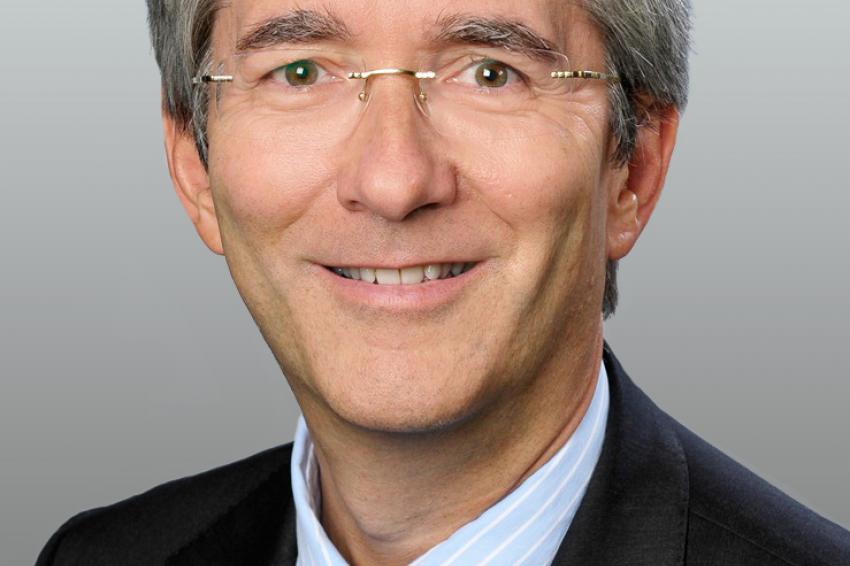The Million-Dollar Question
Can the European Plastics Industry Resume its Success Story Despite Looming International Challenges?
Recovering from the Economic Crisis - The European plastics industry will have to overcome some major challenges in the near future and work hard to maintain its leadership. Looking back, the industry had steadily grown over the years leading up to the 2008-2009 economic crisis, which put the brakes on this growth.
"We saw strong growth for the production of primary plastics and plastics products during the 1990s, followed by a more sideways development from 2000 to 2005," said Patrick Thomas, president of PlasticsEurope and CEO of Bayer MaterialScience.
"The dramatic impact of the economic crisis was clearly recognizable in 2008 and 2009 as the European plastics production fell by around 15% compared to 2007. The economic crisis thus had a tremendous impact on demand of our customer industries. I think it is fair to say that the drop of volume in 2009 changed since then the dynamics of our industry," Thomas said.
However, the industry has adapted to that very difficult economic climate, showing enormous resilience.
"These two factors, the adaptability and resilience of our industry, are the most important ones, leading me to think that the plastics industry has what it takes to overcome these difficult years and to resume its growth pattern in future," Thomas said.
Speaking at the K Show last October in Dusseldorf, Germany, Thomas remarked that the economic recovery in the plastics industry - including plastics producers, plastics converters and the plastics machinery sector - lasted from mid-2009 until 2011, but that, in terms of turnover, the plastics industry has not yet reached pre-crisis levels. In October, the evolution of the different sectors of the European plastics industry during the first half of 2013 and the expectations for the second half of the year indicated that 2013 was a year of stabilization for the plastics industry.
For 2014, the industry expects a slight recovery of the plastics production, although it will continue to remain far from pre-crisis levels. According to the president of PlasticsEurope, "This indicates a cautiously positive climate which, in conjunction with measures that we expect policymakers will put in place to secure the reindustrialization of Europe, will help our industry to cope with external challenges that we will have to face in the years to come."
Challenges for the European Plastics Industry
In a recent study carried out by The European House - Ambrosetti, the Italian consulting group, the highly competitive international context is undergoing a change. There are several potentially disruptive factors (or "game changers," compare Figure 1) that will certainly affect the plastics industry, namely:
• The competitive advantage of the U.S. in terms of energy after the discovery of shale gas and shale oil deposits;
• The growth of China on the global scene of plastics production (surpassing Europe in 2010) and plastic machinery;
• The downstream integration of the supply chain in oil- and natural-gas-producing countries through external growth channels and massive downstream investment (processing);
• The potential role of Brazil and other Latin American countries in the production of biofuels and bio-based plastics.
"The reduction of energy costs in the U.S. has obviously changed the competitive environment," Thomas said. "The introduction of ‘non-conventional' into the energy mix in the U.S. - shale gas currently accounts for 10% of the U.S. energy production and will rise to 36% by the year 2035 - should not come as a surprise to Europe. This is an industry which has existed for more than 40 years."
In terms of global plastics production, China surpassed Europe in 2010. In 2012, China, for the third year in a row, remained the leader with a share of 23.9% of global plastics production. The gap between China and the rest of the Asian countries is increasing year by year.
The development in plastics processing in India, thanks to the development of manufacturing sectors such as the automotive industry, has also brought a big shift to the balance of the industry in this part of the world.
The Middle East has become a major force on the global stage with direct access to fossil resources, as 67% of the world's oil reserves and 45% of the world's natural gas reside in the region, giving it the unique opportunity to export materials based on natural gas at very low costs.
And finally, the new role of Brazil and other Latin American countries, which have large production of biofuels and bio-based plastics, is having a dramatic effect on the mix of polymers.
"However, this is not a picture of gloom and doom, but rather of reality," Thomas said. "This is the current state of dynamics in the plastics industry. Every challenge is an opportunity, and we do believe that with the right measures in place, supported by European policymakers, our industry will play a key role in Europe's reindustrialization."
Key Player for the Reindustrialization of Europe
In the framework of the EU Industrial Policy Flagship Initiative, the European Union has set the goal of reaching a 20% share of gross domestic product for industrial activities by 2020. PlasticsEurope, the trade association representing the European polymer producers, believes this goal to be realistic, as long as the plastics industry plays a major part.
According to the Ambrosetti study, this industry is one of the sectors providing the greatest contribution to manufacturing with a multiplier effect of 2.4 (as calculated for Italy). Assuming the same multiplier applies to Europe, an increase of €15 billion in the plastics industry turnover could result in a €36 billion increase in the EU GDP.
The same study examines R&D activities, ranking the plastics industry among the top 10 most innovative sectors in Europe with more than 63,000 patents submitted in the last 10 years. The plastics industry is a driver for innovation, directly influencing many other industries.
Contemplating the future growth opportunities for his industry, Patrick Thomas sums it up this way: "Is this success story to go on? That is the million-, dare I say billion-dollar question! I believe the answer is: Yes!"
Material of Innovation and Creativity
The plastics industry is a key contributor to the European economy, delivering the needed innovation to drive substantial and sustainable European industrial growth. To achieve this, Europe must put in place appropriate measures and strong industrial policies, to guarantee this industry's competitiveness, allowing it to effectively contribute to the relaunch of the European manufacturing sector. Thomas is optimistic: "Finally, our industry is a resilient one that has always faced challenges and adapted to changing circumstances. Plastic is the material of innovation and creativity. It has inspired architects, designers, engineers and inventors in every sector, and I firmly believe that it will continue to push the boundaries of human genius and innovation."
The European plastics industry makes a significant contribution to the welfare of Europe by enabling innovation, creating quality of life for citizens and facilitating resource efficiency and climate protection. PlasticsEurope represents European polymer producers. The trade association, with headquarters in Brussels, has more than 100 member companies, producing over 90% of all polymers across the EU 28 member states as well as Norway, Switzerland and Turkey. In total, the European plastics industry - including polymer producers, converters and machine manufacturers - employs more than 1.45 million people to create a turnover in excess of €300 billion per year.







